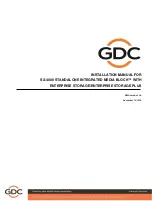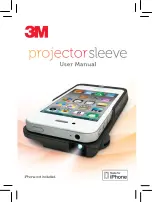
3
263X Series Chlorine Electrodes
6. Storage and Disposal
Store electrode between –10 ºC to 60 ºC (–14 ºF to 140 ºF) at a relative humidity that does not exceed 95%.
The primary concerns when storing the electrode is membrane dehydration and freezing in extremely cold environments.
DO NOT
FREEZE
6.1. Storage of the Sensor
If the sensor or panel assembly is to be removed from service for a period of time the sensor must be properly prepared for storage
and may need to be recommissioned.
Storage periods of 1 week or less:
• Close the drain valve, then close the inlet valve of the
fl
ow cell, to maintain water inside the
fl
ow cell to keep the membrane wet.
• If draining the
fl
ow cell is required, remove the sensor from the cell and the 2650 electronics and store in the shipping bottle with
tap water added.
Storage periods greater than 1 week, but less than 2 months:
• Remove the membrane cap and internal electrolyte solution.
• Rinse the sensor internal chamber with DI water or cold tap water; drain and allow to dry.
• Place the membrane cap back onto the sensor. INSTALL LOOSE, DO NOT COMPLETELY TIGHTEN THE CAP.
WHEN STORED DRY, THE MEMBRANE CAP MUST BE STORED RELAXED AND UNSTRESSED.
• Store sensor DRY in the shipping bottle, DO NOT ADD WATER.
Recommissioning Procedure:
1. Fill the sensor with the electrolyte as outlined in Maintenance, Section 3, and install the membrane cap.
2. The sensor will have to be polarized in the
fl
ow cell with
fl
owing Chlorinated water before being used.
Note:
This may take 30 to 120 minutes before calibration can be performed.
3. If the sensor does not recover after recommission, follow steps 1-10 outlined under
"Storage periods greater than 2 months."
4. If the sensor still fails to work properly, continue with steps 11-17.
Storage periods greater than 2 months:
• If the sensor has been in storage for a long period of time, or used in a chlorine free environment, the sensor may develop
a low slope (output), which may cause the sensor to have a slow response time.
• In this case, the sensor must be reconditioned.
Required to recondition a sensor:
• DI Water
• Beaker (any size available)
• Polishing Sheets (Included in sensor maintenance kit)
• Free Chlorine: Chlorine Bleach (13% concentration)
• Chlorine Dioxide: Aqueous Chlorine Dioxide solution
Reconditioning Procedure:
1. Remove the sensor from the 2750-7 electronics.
2. Remove the membrane cap.
3. Place the sensor on a
fi
rm
fl
at surface with the gold
cathode pointing upward.
4. Apply a small amount of water to the Blue (Course)
polishing paper (dull side).
5. Polish the gold electrode by moving the paper in a
circular pattern for 30 seconds. DO NOT go back and
forth in a single direction. See Figure 1.
6. Rinse the sensor tip with DI water.
7. Apply a small amount of DI water to the White
(Fine) polishing paper (dull side) and polish the gold
electrode by moving the paper in a circular pattern for
30 seconds. DO NOT go back and forth in a single
direction. See
fi
gure 1.
8. Rinse the sensor tip with DI water.
9. Top off the sensor with electrolyte and inspect
membrane for dirt or damage. Replace if necessary.
10. Insert the sensor into the 2650 electronics and apply
power.
(Steps 11-17, See Next Page)
CAUTION!
Bleach and Chlorine Dioxide solutions are very corrosive and
may release dangerous gases if it comes in contact with acids.
• Wear proper protective clothing (gloves and eye protection)
• Avoid contact with skin and eyes
• Observe all warnings on safety data sheets
• Avoid spilling bleach and possible contact with acids
Curved Surface
Figure 1


























